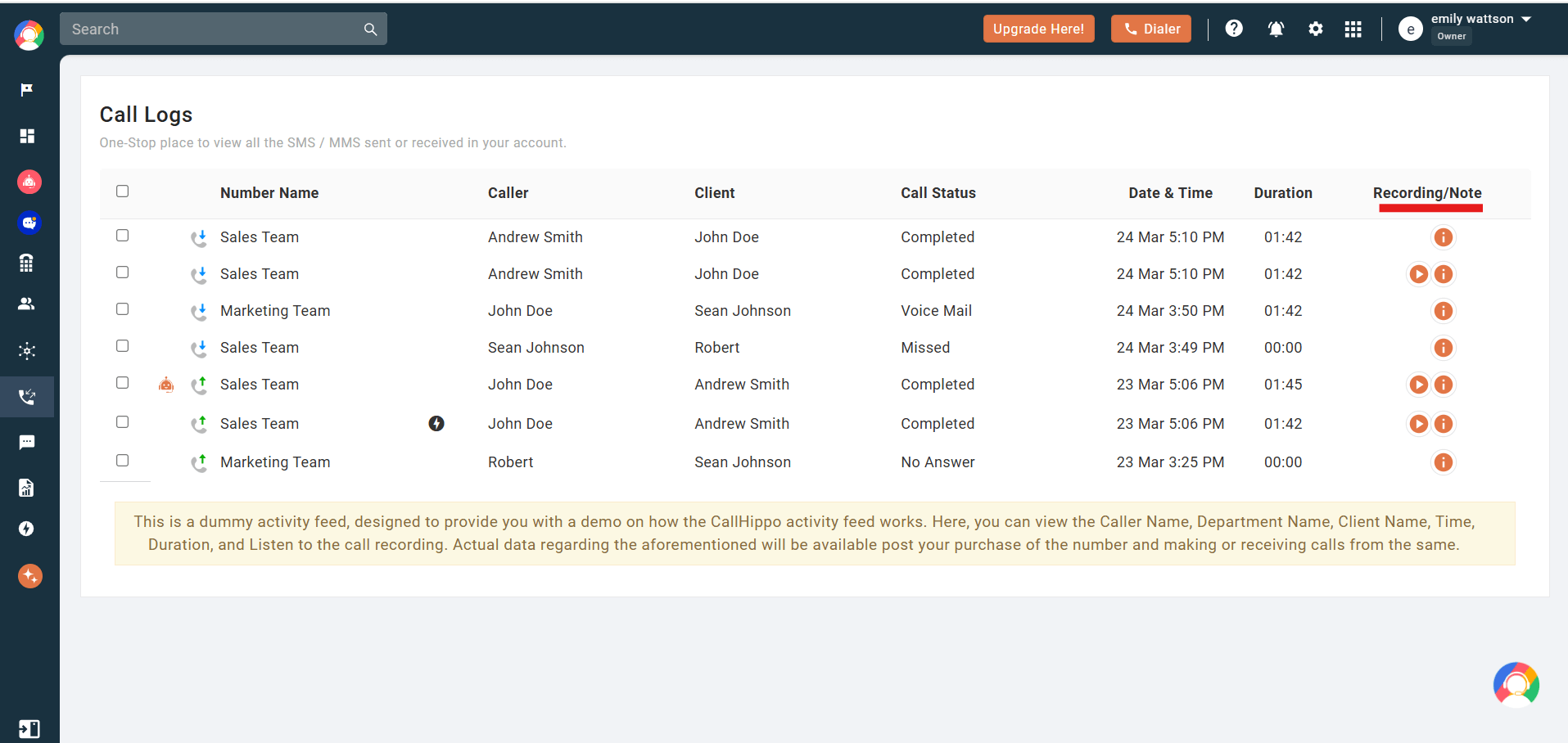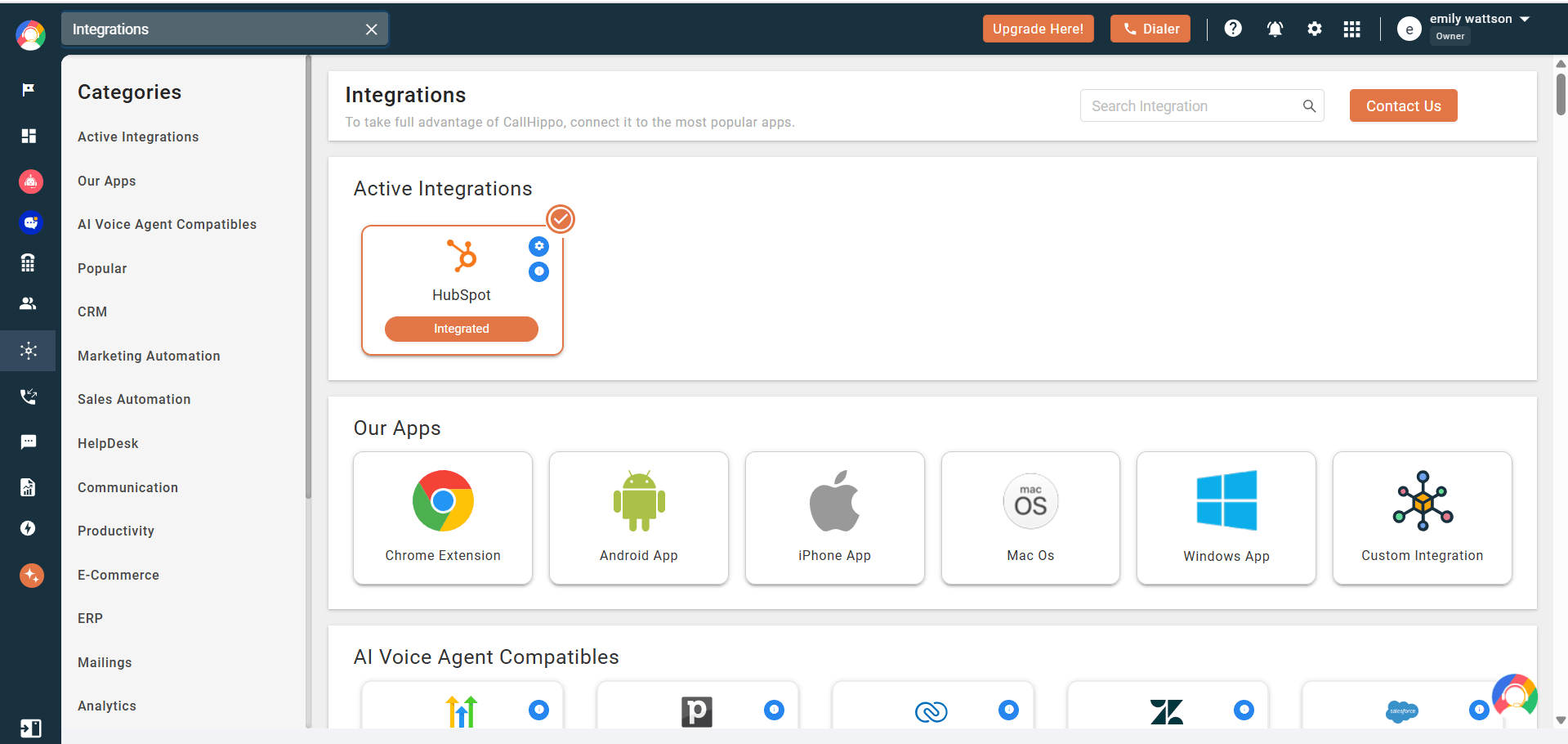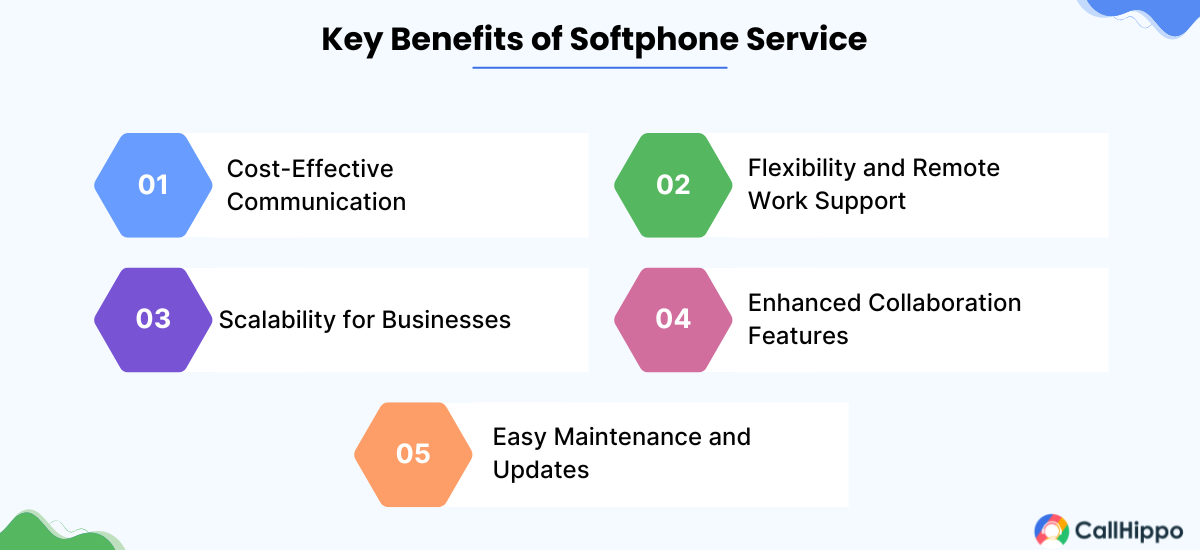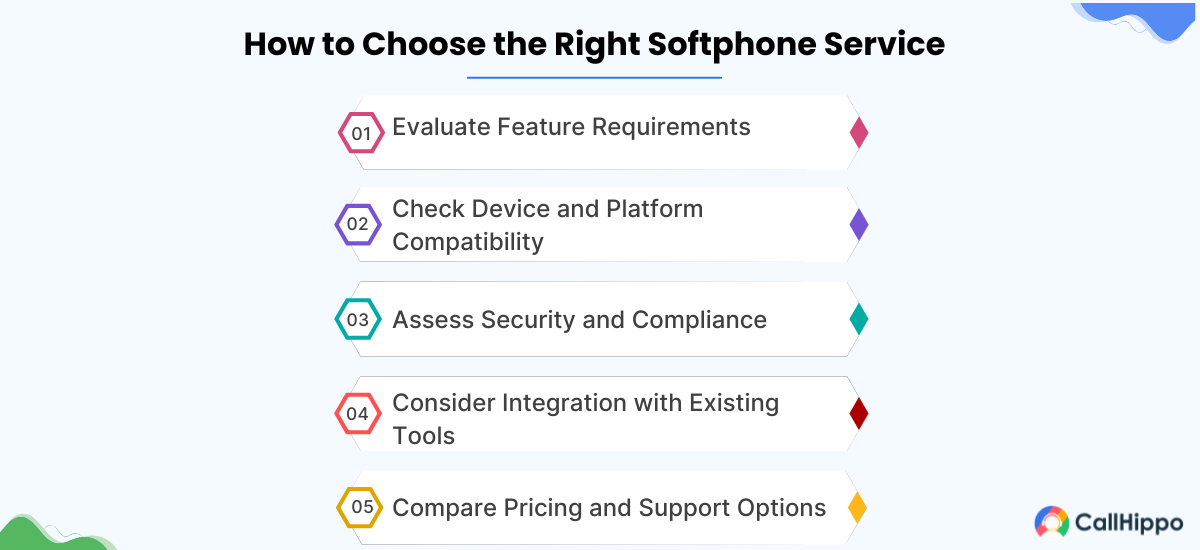Have you ever answered a call right from your laptop or phone, without touching a desk phone? That is a softphone. It is just software that lets you make phone calls over the internet. It’s simple. It’s flexible. And it’s growing fast. About 31% of businesses now use VoIP systems, the technology behind softphones. In this blog, I will explain what is a softphone, how it works, and why it matters for businesses today.
Softphone Meaning and Definition
A softphone software is a tool that lets you make telephone calls over the internet. You don’t need a desk phone. Instead, you use your computer, tablet, or smartphone. It works via a program or app that resembles a phone keypad. Softphone technology is used by apps like Zoom and Skype. From your device, you can make calls and send instant messages. You can even join video conferencing sessions.
How Does a Softphone Work?
Using a softphone is simpler than it seems. It turns your device into a phone that runs over the internet. Let’s break down how it all works:
1.VoIP Technology Behind Softphones
Softphones use VoIP, or Voice over Internet Protocol, to make calls. This means your voice is converted into data and transmitted via the internet. With a VoIP phone system, you can make crystal clear calls. And you don’t require a regular phone line for this. Plus, it lowers expenses, particularly when it is an international or long-distance calls. Over a 1/4th of workers now use VoIP, including 37% of remote employees.
2. Device Compatibility
Softphones work on multiple operating systems. You can use them on a tablet, computer, or mobile device. It simplifies staying connected no matter where you are.. You just need the softphone apps installed. Plus an internet connection to start calling.
3. Call Setup and Management Features
Softphones come with features that make calling easier. You can hold, transfer, or record incoming calls. You can also access call logs and voicemail messages. Contact lists are available, too. These tools help you manage communication. And there is no need to switch between devices.
4. Integration with Business Systems
Many softphone applications connect with other business tools.
- CRM or helpdesk software can work alongside your softphone provider. This integration helps you track customer interactions. It enhances efficiency, saves time, and organizes communication.
Softphone vs. Traditional Phone Systems
If you are still using conventional phones, you might wonder how softphones compare. Softphones run over the internet. They offer flexibility that the desk phone hardware cannot match. Let’s see how they are different.
| Aspect | Softphones | Traditional Phones |
|---|---|---|
| Cost | Cheaper. No hardware needed. Calls abroad cost less. | More expensive. Extra setup costs. |
| Features | Call forwarding, voicemail, video calls, logs, and more. | Only basic calling and voicemail. |
| Mobility | Use on laptop, tablet, or phone with internet. | Stuck to one desk in one place. |
| Maintenance | Easy software updates. | Needs hardware fixes and changes. |
| Best For | Teams that want flexibility and savings. | Offices that stay in one location. |
1. Cost Comparison
Softphones usually cost less than traditional phone systems. You don’t need extra hardware or complex wiring. Maintenance and upgrades are simpler too. Plus, VoIP calls can be much cheaper. This is especially true for long-distance or international calls. That is why they are ideal for businesses that want to reduce communication costs.
2. Feature Comparison
Softphones are more feature-rich than a normal desk phone. You can forward calls and receive voicemail messages. Also, you can participate in video calls and view call logs. Physical phones rarely give you such choices. Softphones give you the capacity to manage communication more efficiently. You become more engaged with your customers and team.
3. Mobility and Accessibility
Softphones work on multiple devices. This includes PCs, tablets, and mobile apps. You can make and receive calls from anywhere with just an internet connection. Traditional desk phones confine you to one place. But with softphones, you get more flexibility and independence. This is particularly helpful in hybrid or remote work environments.
What Are the Key Features of a Softphone System?
Softphones have features that go beyond simple calling. They make communication better and flexible for both personal and business use. Let’s look at some key features:

1. Voice and Video Calling
You can use Softphone for voice calling in the same way you would with a desk phone. You also have the option to video call if you would like, to speak with someone face-to-face. This allows you to connect with your teams or clients for real-time conversation. In fact, 91% of businesses use video marketing as a marketing tool.
2. Instant Messaging and Presence
Most softphones also come with instant messaging support. You can easily send a message without even having to start a call. Presence features indicate whether someone is online, busy, or away. This specific data helps you determine the best time and method to reach out to someone.
3. Call Recording and Logging
Softphones often include call recording. This is useful if you want to revisit conversations later. They also keep call logs so you can check who called and when. This makes it easier to stay organized and not miss important details.

4. Contact and CRM Integration
Softphones can connect with your personal contacts and CRM software. This means you can call a customer directly from your CRM dashboard. Integration saves time and ensures all interactions are recorded. It also helps your team provide better customer support. Also, softphone can be used for Mac and Android both operating systems, giving team flexibility to handle business calls from any device, anywhere.

5. Multi-Device Sync
You can use a softphone on different devices and still stay connected.
- you can start a call on your computer. Then continue it on your cell phone. This sync across devices makes sure that you never miss a conversation. It gives you the freedom to work from anywhere.
What Are the Different Types of Softphones?
Softphones are not all the same. They come in different forms to suit how and where you work. The main types are discussed below:
1. Desktop Softphones
Desktop softphones are apps you install on your computer. They give you a full interface with calling, messaging, and video features. These work best if you spend most of your time at a desk. They also provide better call quality. This is because they depend on stable internet connections.
2. Mobile Softphones
Mobile softphones are categorized as mobile apps. These are designed for smartphones and tablets. They let you carry your business phone wherever you go. This option is perfect if you work on the move. You can call, text, or join meetings from your mobile device with just an internet connection.
3. Web-Based Softphones
Web-based softphones run directly from your browser. You do not need to download or install anything. They are quick to access and work well on shared or temporary devices. This makes them useful when you log in from different locations. Or when you don’t want to install new software.
- The first softphone was introduced in the mid-1990s. Back then, it could only be used on large desktop computers. Nowadays, you can easily access softphones on your phone, tablet, or web browser.
What Are the Main Benefits of Using a Softphone Service?
Softphones are not just about replacing traditional phones. They bring a set of practical benefits that make communication smoother and smarter.

1. Cost-Effective Communication
Softphones cut out hardware costs and reduce phone costs. You only need the app and the internet to connect. Over time, this makes communication affordable for businesses. This is especially true when compared to traditional phone systems.
2. Flexibility and Remote Work Support
Softphones let employees take calls from anywhere. They only need a laptop or smartphone. This makes it easy to stay connected at home, on the move, or in the office.
3. Scalability for Businesses of Any Size
Softphones can grow with your business. Adding or removing users takes only a few clicks. Whether you are a startup or a large company, scaling up is fast and stress-free.
4. Enhanced Collaboration Features
Softphones often include video calls, chat, and file sharing. These tools bring teams closer and speed up decision-making. It is easier to work together when everything happens in one communications platform.
5. Easy Maintenance and Updates
There’s no complex physical hardware to manage. Updates are automatic, and the service providers handle most of the technical work. This keeps your system up-to-date without extra effort from your team.
Top Softphone Providers for Businesses
Here are some leading VoIP service providers. Each has its benefits and disadvantages. Choose wisely based on your business use case.
| Provider | Best For | Key Features | Pros | Cons | Pricing | |
|---|---|---|---|---|---|---|
| 1 | CallHippo | Small to mid-sized teams | Local & toll-free numbers, Call recording, CRM & app integrations, Power dialer, AI Copilot | Quick setup, Reliable call quality, Strong features in mid-plans | Some advanced tools cost extra, Add-on charges for SMS/specialty numbers | Free – $42/user/month |
| 2 | RingCentral | Enterprises needing global coverage | Multi-channel communication, IVR, Large meetings, Strong integrations, Call analytics | Feature-rich & scalable, Excellent reliability, Great for large meetings | Pricey for higher tiers. Some features in premium plans | $20 – $45/agent/month |
| 3 | Nextiva | Growing businesses wanting balance | Unlimited domestic calls, Voicemail transcription, CRM integrations, Call recording, Team messaging | Great UX & support, Good value for features, Flexible for growth | Costs rise at higher tiers, Advanced admin may need setup | $15 – $75+/user/month |
| 4 | Dialpad | Teams wanting modern AI tools | AI live transcription, Unlimited US/CA calls, CRM integrations, Cross-device sync, Multi-office mgmt | Easy to set up, AI saves time, Good value-based plans | Extra for SSO & advanced, International costs more | $15 – Custom |
| 5 | Vonage | Businesses needing global reach & APIs | Voice & video calls, SMS/MMS, Team messaging, APIs, Global numbers | Good global reach, Modular features, Strong reliability | Some features only in premium, Add-ons increase costs | $19.99 – $39.99+/user/month |
| 6 | 3CX | Businesses with IT support wanting control | Call forwarding, Call analytics, Cloud/on-prem deploy, Call routing, IVR | Very cost-efficient, Strong customization, Full PBX control | Less polished UX, Needs technical know-how | Free – Paid (varies) |
1. CallHippo
CallHippo delivers a fast, cloud-based business phone system. You can set up local, mobile, or toll-free numbers across many countries. It works via desktop and mobile apps. It is clean, simple to use, and built for teams that want call quality and instant setup.
Key Features
- Local & toll-free numbers
- Call recording
- CRM & app integrations
- Power dialer
- SMS & phone number porting
- AI Copilot
Pros
- Setup is quick and intuitive.
- Offers reliable call quality & international presence.
- Many features in mid-plans and mobile app works well.
Cons
- Some advanced tools cost extra.
- SMS or specialty number usage can incur add-on charges.
Best for
Small to mid-sized teams who want robust calling with minimal fuss.
Pricing
- Basic: $0 per user/month
- Starter: $18 per user/month
- Professional: $30 per user/month
- Ultimate: $42 per user/month
Ready to Try a Softphone?
Softphones make business calls simple and flexible. Get started with CallHippo today and see how easy communication can be.
2. RingCentral
RingCentral is a mature unified communications platform. It bundles voice, video, messaging, and collaboration into one app. It is global, full-featured, and great when you need many integrations. Also, it is very strong on reliability and for scaling.
Key Features
- Multi-channel communication
- IVR
- Large meeting & conference support
- Strong integration ecosystem
- Call analytics
Pros
- The platform is very feature-rich and scalable.
- Excellent global reliability and uptime.
- Strong support for large meetings & collaboration.
Cons
- Can be pricey, especially for higher tiers.
- Some features are locked behind premium plans.
Best for
Enterprises or businesses that want robust features and broad global coverage.
Pricing
- Core: $30 /user/month
- Advanced: $35 /user/month
- Ultra: $45 /user/month
3. Nextiva
Nextiva aims for simplicity with strong features. It offers unified communications tools with voice, SMS, video, and integrations. Their intuitive interface is clean. Onboarding is also very smooth. It is good when you want a balance between features and usability.
Key Features
- Unlimited domestic calling & toll-free minutes
- Voicemail transcription
- CRM integrations
- Call recording
- Team messaging
Pros
- Great user experience and responsive support.
- Strong value for features like SMS, video, and recording.
- Flexible enough for growing teams.
Cons
- More costly as you add higher-tier features.
- Some advanced admin/routing features may need custom setup.
Best for
Businesses that want power plus ease of use in one package.
Pricing
- Core: $15 per user/month
- Engage: $25 per user/month
- Power Suite CX: $75 per user/month
- Enterprise Essential: Starting at $75 per agent/month
4. Dialpad
Dialpad is modern and cloud-first. It leans heavily on AI for things like live transcription, summaries, and intelligent routing. It is lightweight, flexible, and works well on mobile and desktop. Good if you want smart tools built-in.
Key Features
- AI-powered live transcription
- Unlimited calling (US/CA) & messaging
- CRM integrations
- Cross-device support & sync
- Multi-office management
Pros
- Very intuitive & fast to set up.
- AI tools reduce manual work.
- Good value for features in base plans.
Cons
- Features like SSO or advanced controls cost more.
- International calling or specialty numbers may cost extra.
Best for
Teams wanting modern tools plus AI features without heavy complexity.
Pricing
- Standard: $15/user/month
- Pro: $25/user/month
- Enterprise: Custom pricing
5. Vonage
Vonage offers a broad suite of communication tools. It supports voice, video, SMS, and team messaging. It is flexible with add-ons and coverage. This makes it adaptable for different needs. Plus, Vonage offers API options too.
Key Features
- Business voice & video calling
- SMS/MMS & team messaging
- Call forwarding
- Flexible integrations & APIs
- Global numbers & coverage
Pros
- Good global reach and number options.
- Features are modular, so you pay for what you need.
- Strong brand and reliability.
Cons
- Some useful features only appear in premium plans.
- Costs add up if using many add-ons.
Best for
Businesses needing global presence and lots of customization via APIs.
Pricing
- Mobile: $19.99/user/month
- Premium: $29.99
- Advanced: $39.99 and up.
6. 3CX
3CX offers you great flexibility. You can run it in the cloud or on-premises. It is ideal if you want control and cost savings. The system can be more technical to manage. But the good this is that customization is strong.
Key Features
- Call forwarding
- Call analytics
- Flexible deployment (cloud / on-prem)
- Call routing
- IVR
Pros
- Very cost-efficient, especially for on-prem setups.
- Strong control over call flows and PBX features.
- Good for businesses with internal technical capacity.
Cons
- User experience can lag compared to more polished cloud-first platforms.
- Support and documentation sometimes assume technical know-how.
Best for
Businesses that want flexibility and control and have in-house IT.
Pricing
- Free/basic plan for small teams (up to ~10 users)
- Paid plans vary
- Test your softphone setup with a small group first. Identify common issues like call quality or connectivity early. Then fix them before rolling out to the entire team
How to Choose the Right Softphone Service?
With so many options out there, choosing the right softphone can feel tricky. But it doesn’t have to be. Focus on what your business really needs. The decision will become much clearer. Here are some points that will help you make a smart choice.

1. Evaluate Feature Requirements
Start by asking what you need the softphone to do for you. Is it just voice communication? Or do you also need video, SMS, or integrations? Your answer will help narrow the field. Think about the team size also. A small business might need fewer features. On the other hand, a growing one may want scalability features.
2. Check Device and Platform Compatibility
Your team won’t always be tied to one device. So, make sure the softphone works on desktop, mobile, and web. This way, everyone stays connected wherever they are. Also, check the operating systems. Some tools work better on Windows, while others shine on Mac or Android. Compatibility avoids headaches later.
3. Assess Security and Compliance
Security isn’t optional anymore. Look for features like encryption, two-factor authentication, and data privacy controls. These protect both your team and your customers. If you are in a regulated industry, compliance matters even more. Choose a service that meets standards like HIPAA or GDPR. This totally depends on which business you are in.
4. Consider Integration with Existing Tools
Think about the apps your team already uses. Does the softphone connect with your CRM, helpdesk, or project tools? If yes, it can save a lot of time. Integrations mean less switching between apps. Your team can handle calls, track customer data, and work smarter in one place.
5. Compare Pricing and Support Options
Of course, budget is a big factor. Compare plans not only by price but also by what is included. Sometimes a slightly higher plan gives you better value. Do not forget support. A provider with quick, helpful customer service can make a big difference when issues come up.
Migrating from Traditional Phones to a Softphone System
Switching to a softphone might sound overwhelming. But it is actually easier than you think. I have listed a simple roadmap to guide your transition.
1. Assess Your Current Phone System
First, review how your current phone system works. Check how many phone lines you use. What features do you rely on? Where does it fall short? This assessment gives you a clear idea of what to look for in a new system.
2. Plan the Migration Timeline
Moving all at once can be risky. Instead, set up a step-by-step plan with clear timelines. Decide which departments or users will move first. A phased approach makes the process smoother and less stressful.
3. Train Employees on Softphone Usage
Even the best tools are useless if your team does not actually know how to use them. That is why you should organize short training sessions to explain the basics. Encourage employees to practice before the system fully goes live. This will boost their comfort and confidence.
4. Test and Go Live
Run tests before the final switch. Check call quality and softphone functionality. And at last, check if they are compatible on different devices. Once you are confident that everything works well, go live. Having IT or support staff ready during this stage can help fix issues quickly.
5. Monitor and Optimize Post-Migration
Don’t stop after going live. Keep an eye on call quality, feature usage, and employee feedback. Make adjustments when needed. Over time, this would make sure that your softphone system performs at its best.
Common Challenges with Softphones and How to Solve Them?
Softphones make communication easier. But like any technology, they come with some challenges also. Let us see what problems you will probably face and how you can handle them.
1. Network and Connectivity Issues
- Softphones highly depend on a stable internet connection. Poor bandwidth or network interruptions can cause dropped calls or lag. This would make your conversations frustrating.
- Use a reliable and high-speed connection. Prioritize VoIP traffic on your network. You can also consider backup connections for critical teams. This will make sure that your communication is not affected.
2. Audio Quality Concerns
- Call clarity can suffer when there are network issues, hardware issues, or poor microphones. Along with this, echoes, delays, or distortions may impact conversations.
- It is always better to invest in quality headsets or a VoIP headset. Enable noise suppression and make sure that your network supports VoIP standards. Plus, regular testing and updates help maintain consistent call quality.
3. Security Risks
- Softphones transmit sensitive data over the internet. This makes them targets for hacking, eavesdropping, or malware attacks.
- Choose providers with encryption, strong authentication, and regular security updates. Educate your team about safe usage, and avoid unsecured networks for business calls.
4.User Adoption and Training
- Employees may resist new systems or struggle to learn features. This slows productivity.
- Provide hands-on training and create simple guides. Encourage a trial period where employees can explore the essential softphone features. Continuous support ensures smooth adoption and confident use.
How to Save Costs When Using Softphones?
Softphones can save your business money if you use them smartly. Small tweaks and simple habits can help you cut costs. Let’s see some ways to do it.
1. Evaluate Call Volume and Usage Patterns
Look at how your team makes calls. Which hours are busiest? Which calls are the longest? Knowing this helps you pick the right plan. You avoid paying for unused minutes.
2. Select Cost-Effective Softphone Plans
Not every plan fits every business. Compare features and costs carefully before deciding. Start with a plan that covers your main needs. You can always upgrade if your team grows or needs more features. This approach keeps your budget under control without losing flexibility.
3. Leverage Free or Low-Cost Features
Many free softphone apps offer features like chat, video, or call logging. Make full use of them before buying extra tools. This saves money and keeps your workflow simple. And when you explore all the features, it also helps your team work more efficiently.
4. Reduce Hardware Dependencies
Softphones work on devices you already have. Like laptops, tablets, and smartphones. You don’t need extra phones, PBX systems, or wiring. When you use existing devices, it reduces setup costs. It also makes it easier for teams to get started quickly and stay connected anywhere.
5. Monitor Billing and Usage Regularly
Check your invoices and usage reports every month. Look for unusual charges or features you rarely use. And accordingly, you can adjust your plans and call habits. Regular monitoring helps you avoid surprises. And most importantly, it ensures your softphone service stays cost-effective.
6. Implement Team Guidelines to Avoid Wastage
Set simple rules for call usage. Encourage short calls and mindful use of features. Avoid unnecessary long-distance calls. Because when the team follows guidelines, costs stay under control. Everyone gets used to the rules quickly. This ultimately saves money without affecting communication.
- You can call from your laptop, tablet, or phone.
- Softphones use the internet, so calls are clear and often cheaper.
- Pick a plan that fits your team, not just the hype.
- Make the most of free features before buying extra tools.
- Show your team how to use it well.
- Keep an eye on usage and bills to avoid surprises.
- Start small, test it out, then go full scale.
Conclusion
Softphones are changing the way businesses communicate. They let you make calls from any device. You stay connected no matter where you are. At the same time, they save money and simplify workflows. When teams use softphones effectively, productivity goes up. Plus, the communication becomes smoother. With CallHippo, your team can start using softphones quickly. It’s user-friendly and full of useful features. It keeps everyone connected without complicating things.
FAQs
What devices can I use a softphone on?
A softphone works on nearly any device. Like your computer, tablet, or smartphone. It is compatible with major operating systems like Windows, macOS, iOS, and Android. You can place and receive calls from just about anywhere. Simply install the app, connect to the internet, and you are all set.
Do softphones work without the internet?
Not really! Softphones need an internet connection to work. They use VoIP technology. This sends your voice as data over the web. Without the internet, the calls won’t go through. For the best experience, use a stable connection to avoid delays or dropped calls.
Can I use a softphone for video calls?
Absolutely! Many softphones support video calls in addition to voice. You can join meetings, see your team, and share screens. This makes communication more personal and effective. All you need is a device with a camera and a stable internet connection.
Is a softphone system secure for business use?
Yes, it is. Most modern soft phone systems use encryption and secure protocols to protect your calls. Providers also offer authentication and regular updates. However, always use best practices, such as strong passwords and secure Wi-Fi. Your business communications will remain secure and confidential as a result.0

Subscribe to our newsletter & never miss our latest news and promotions.








